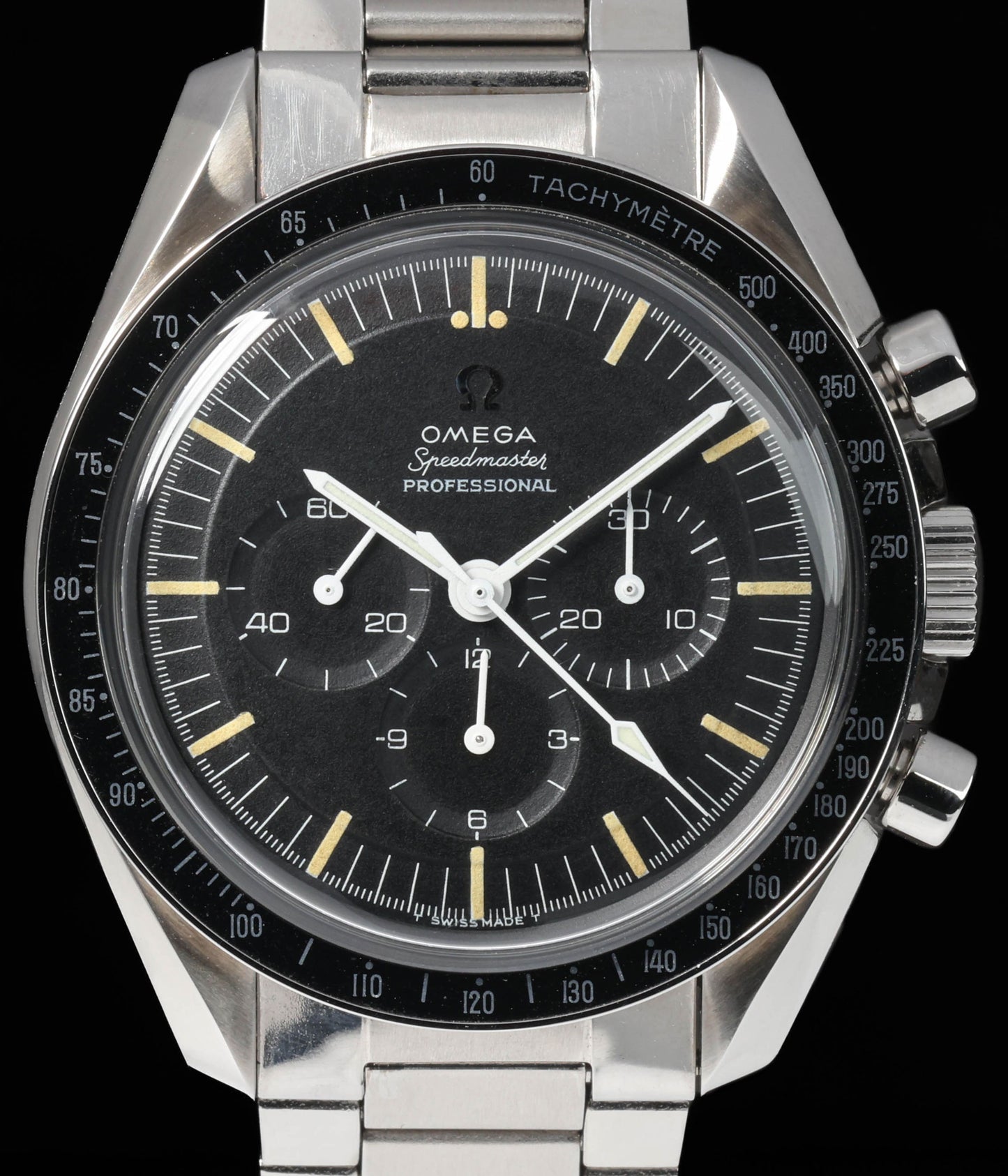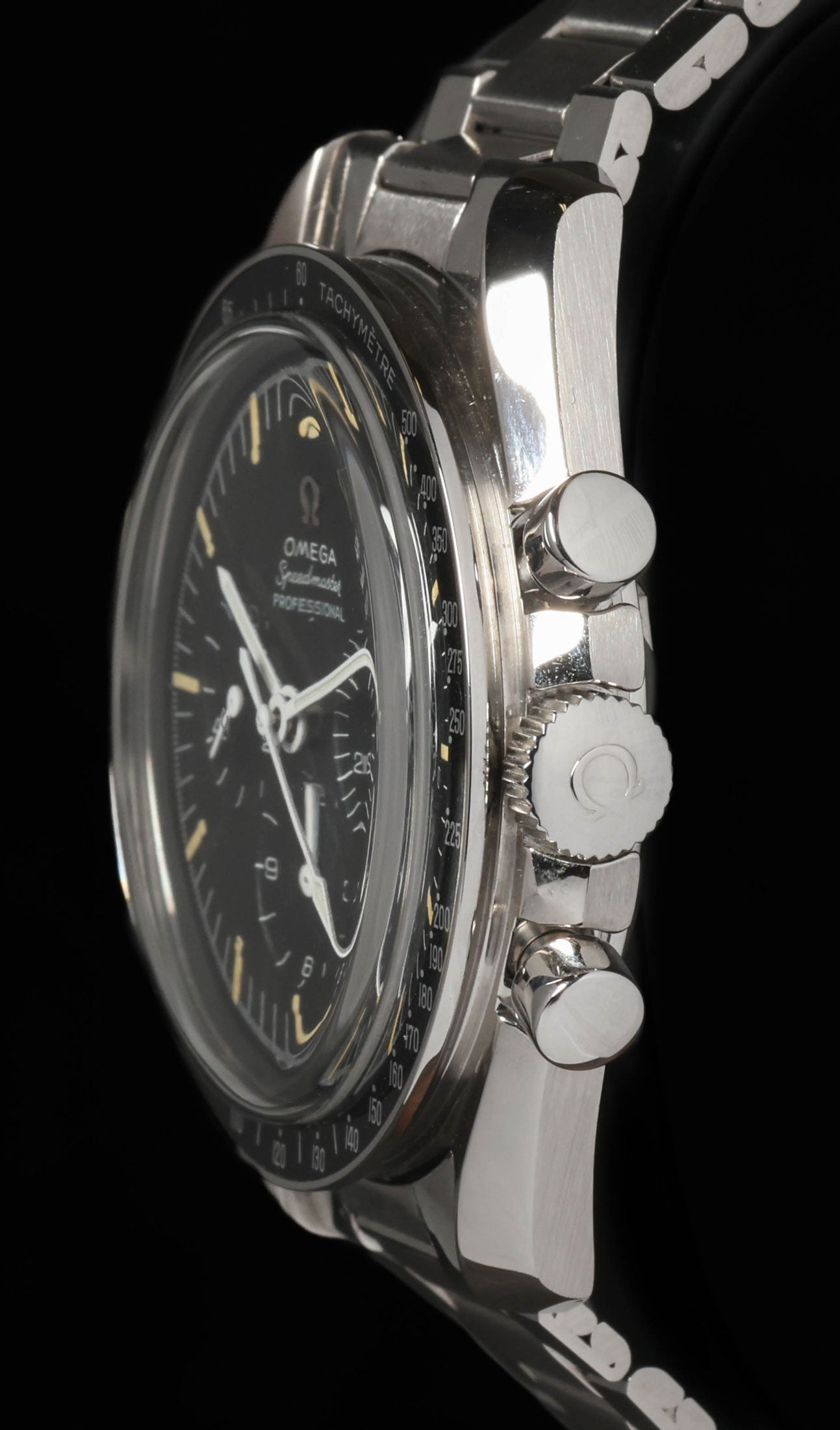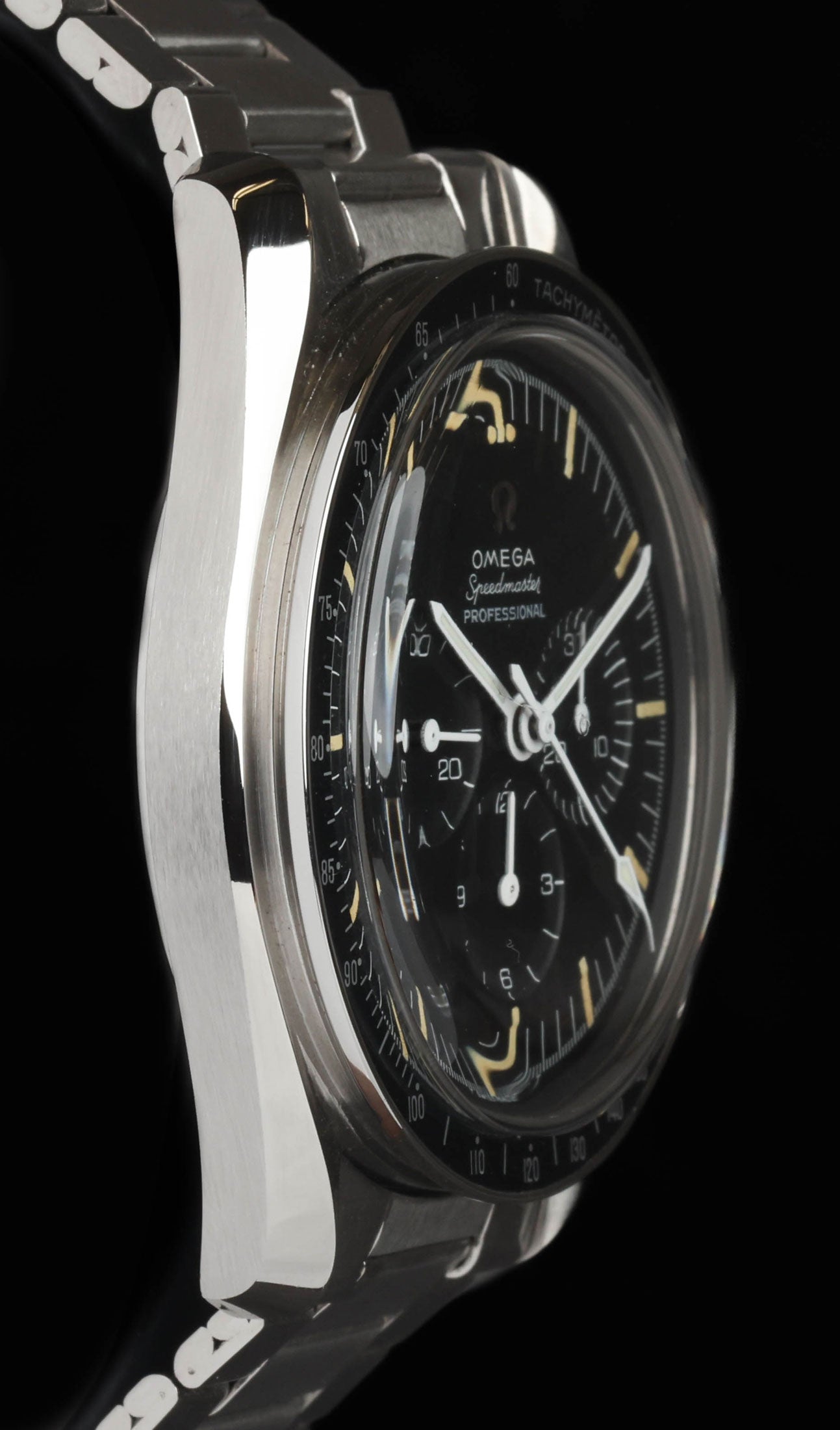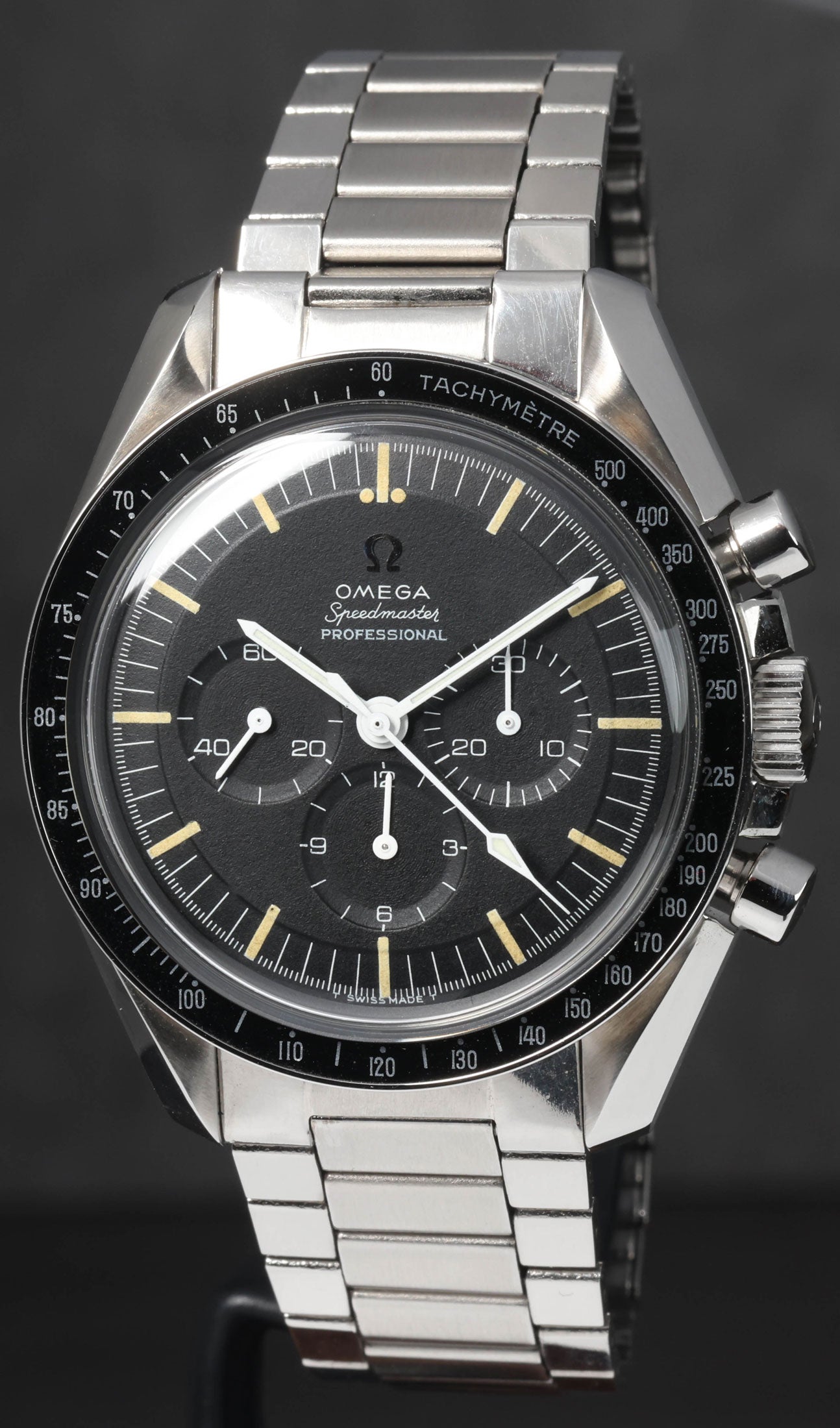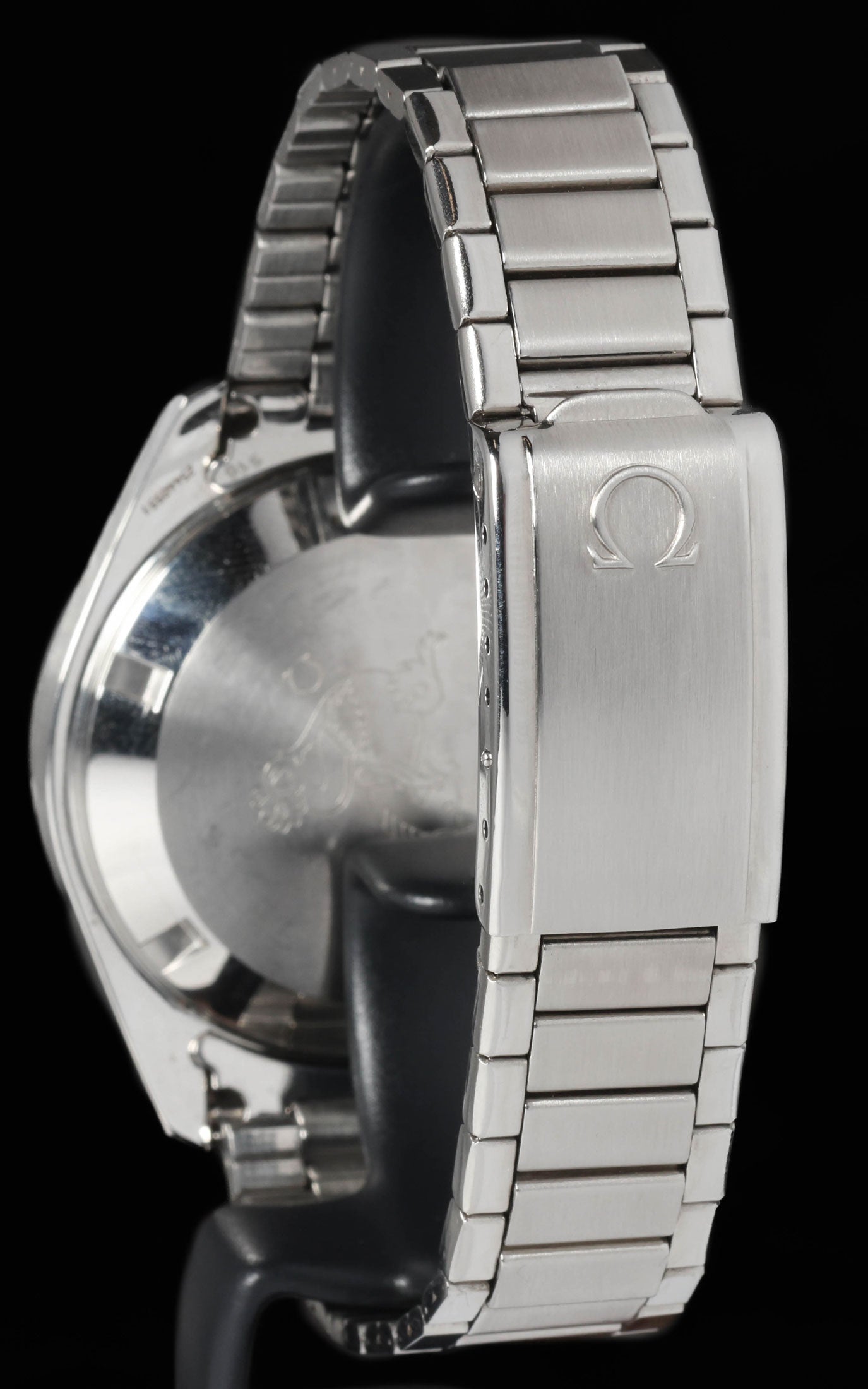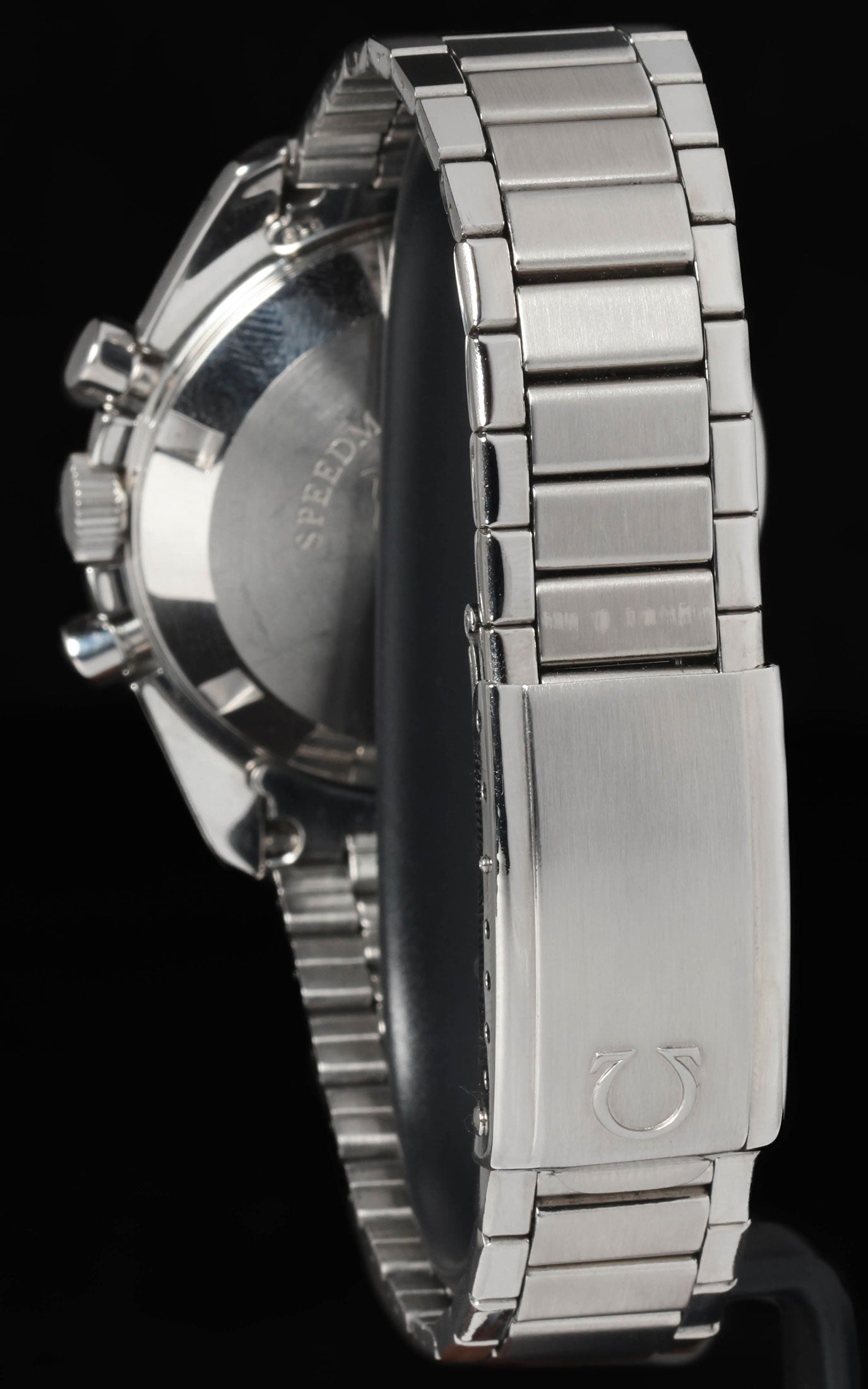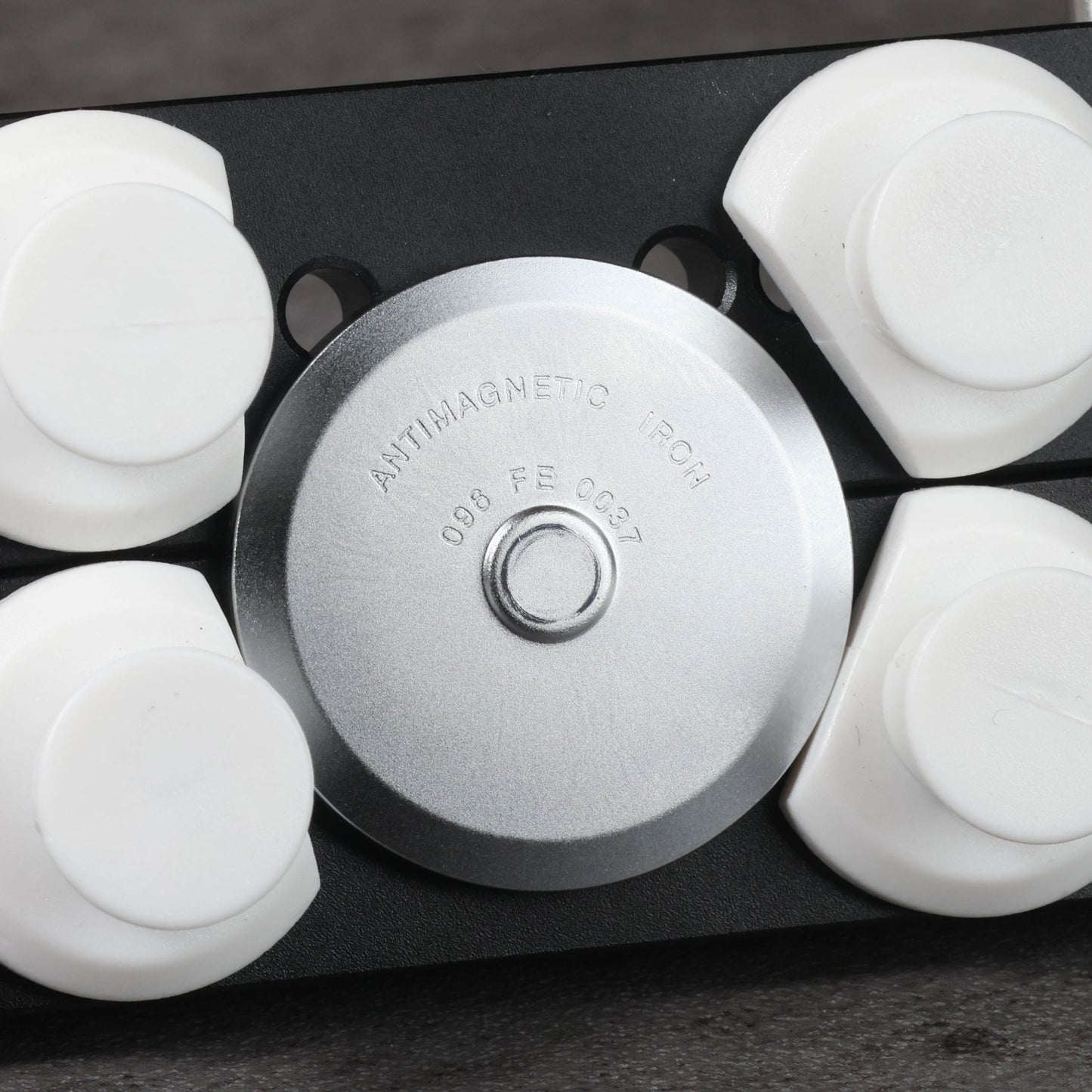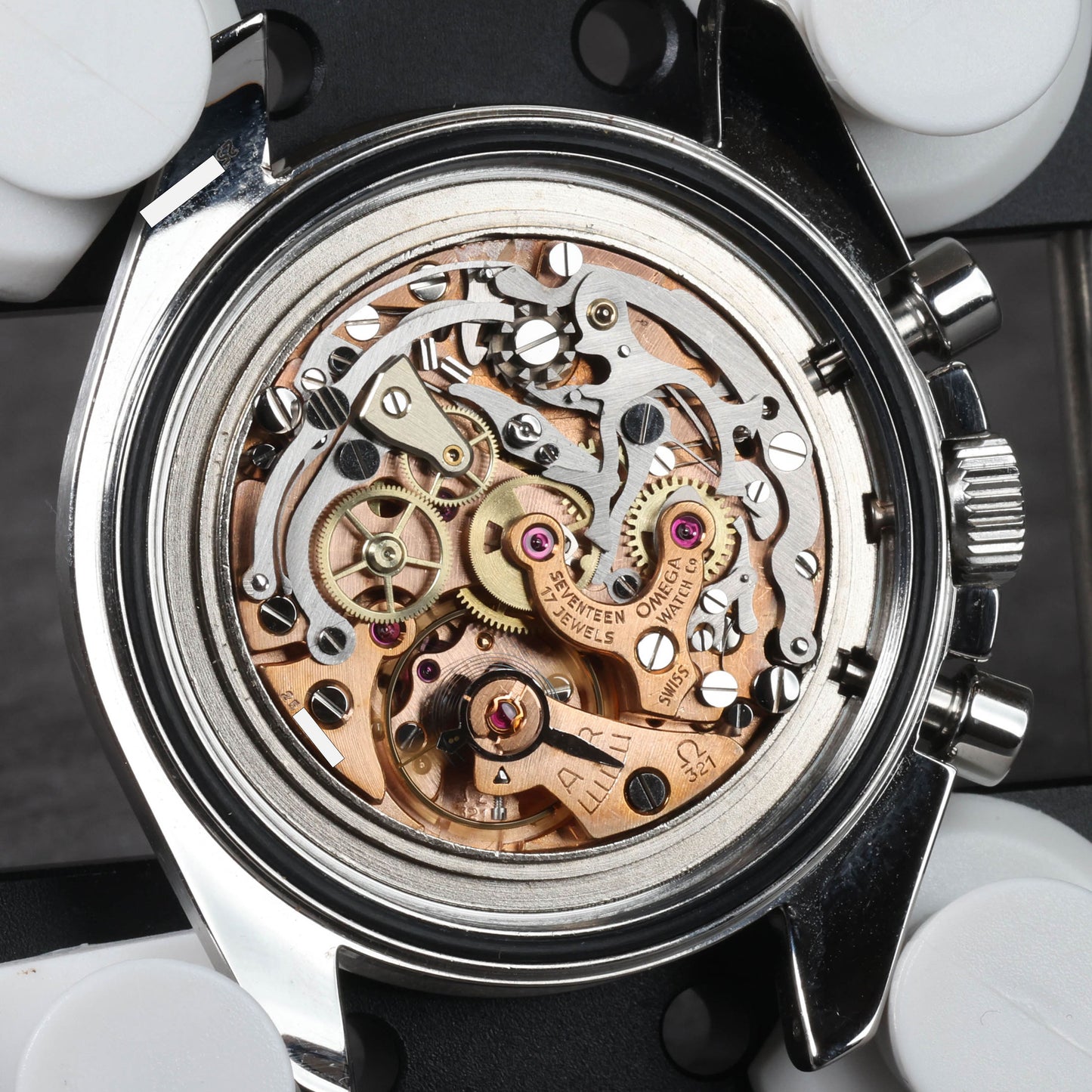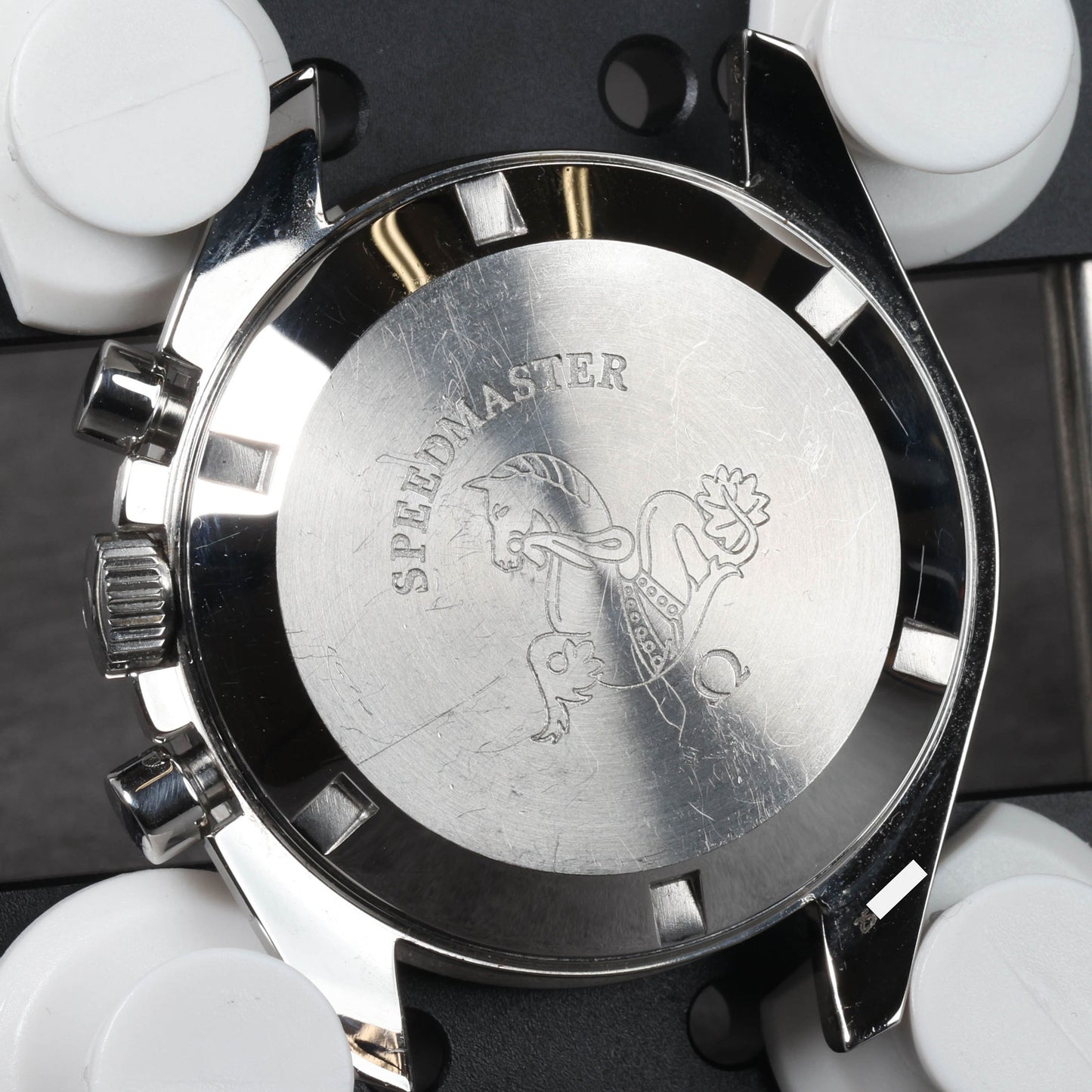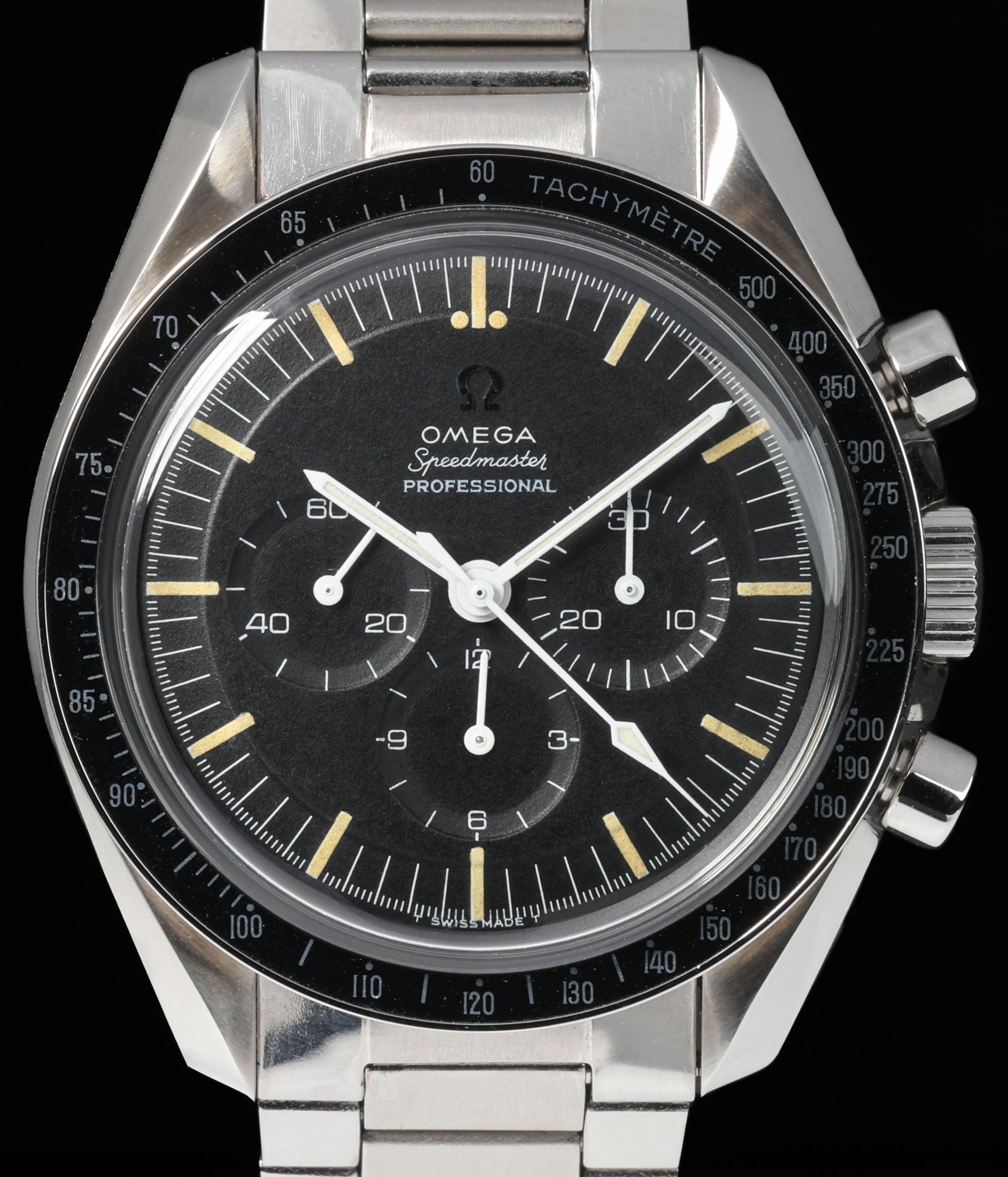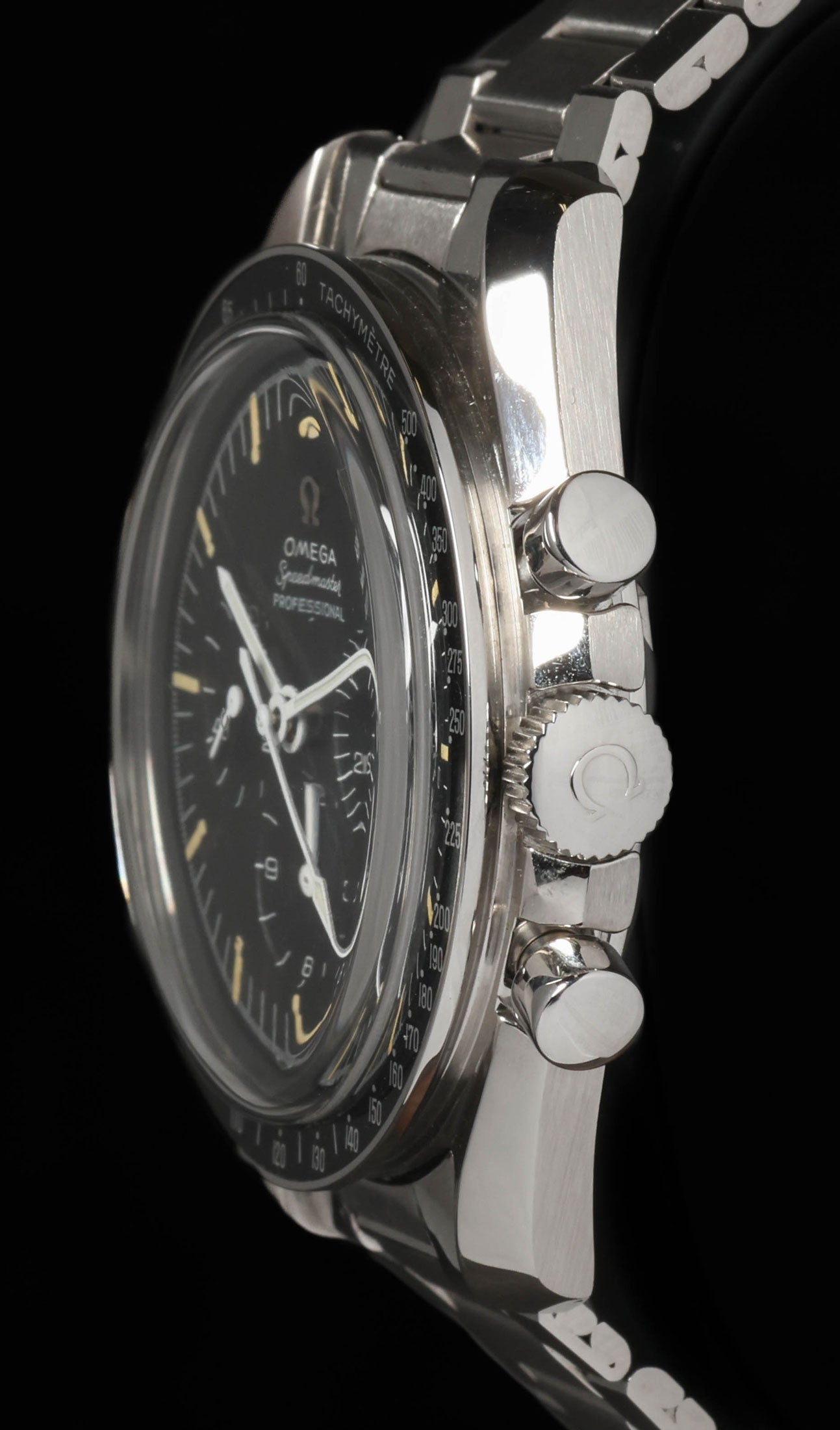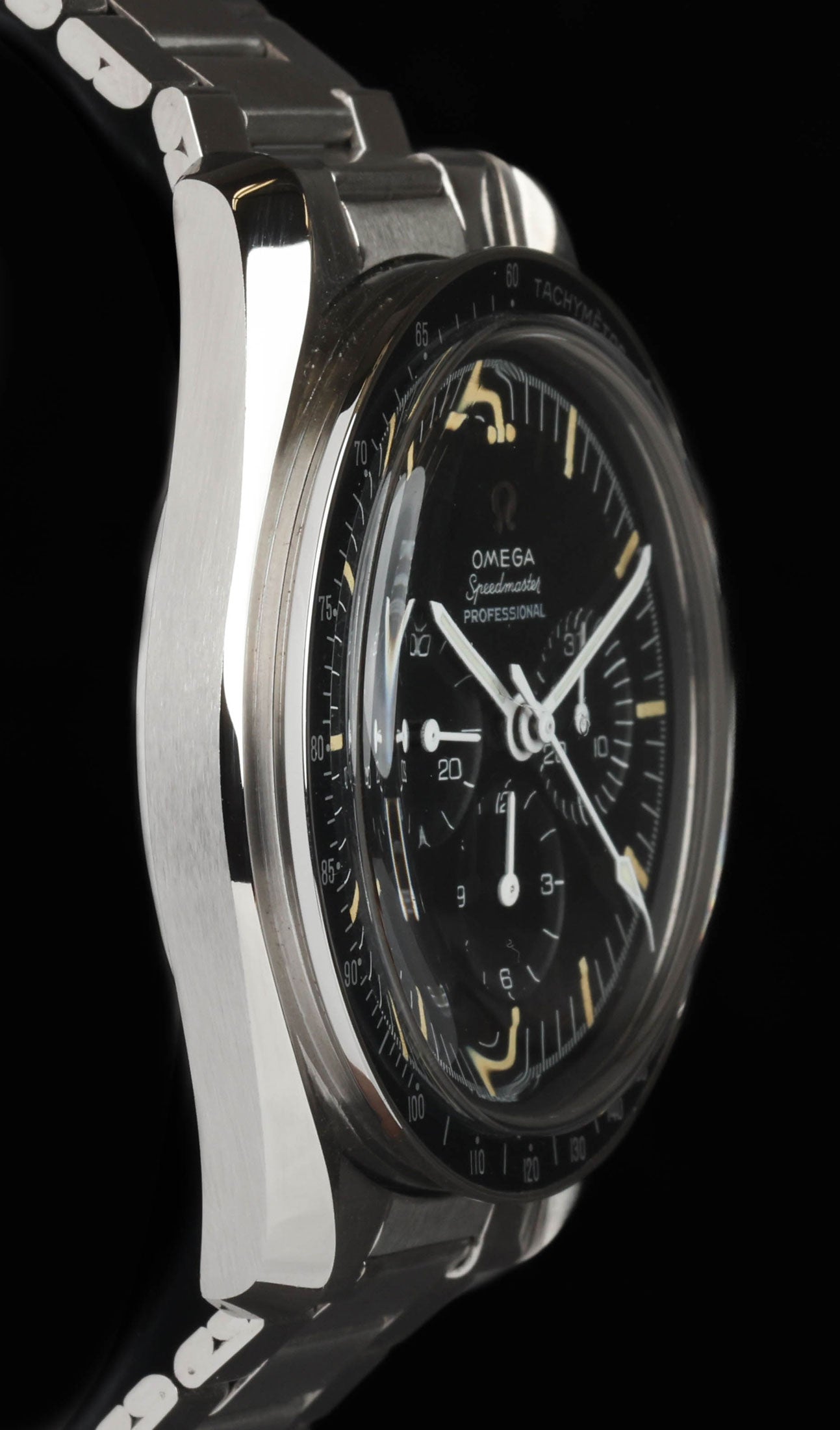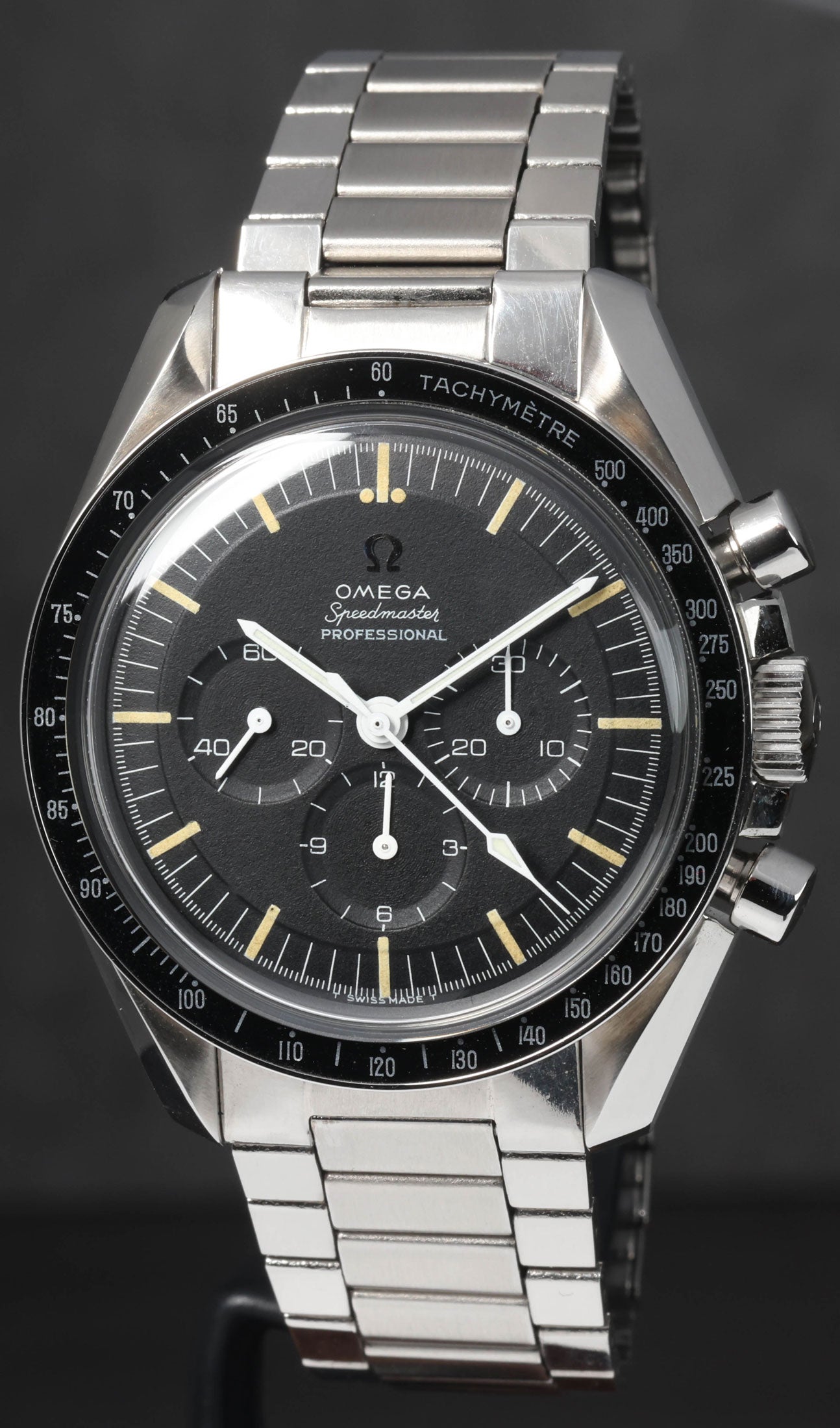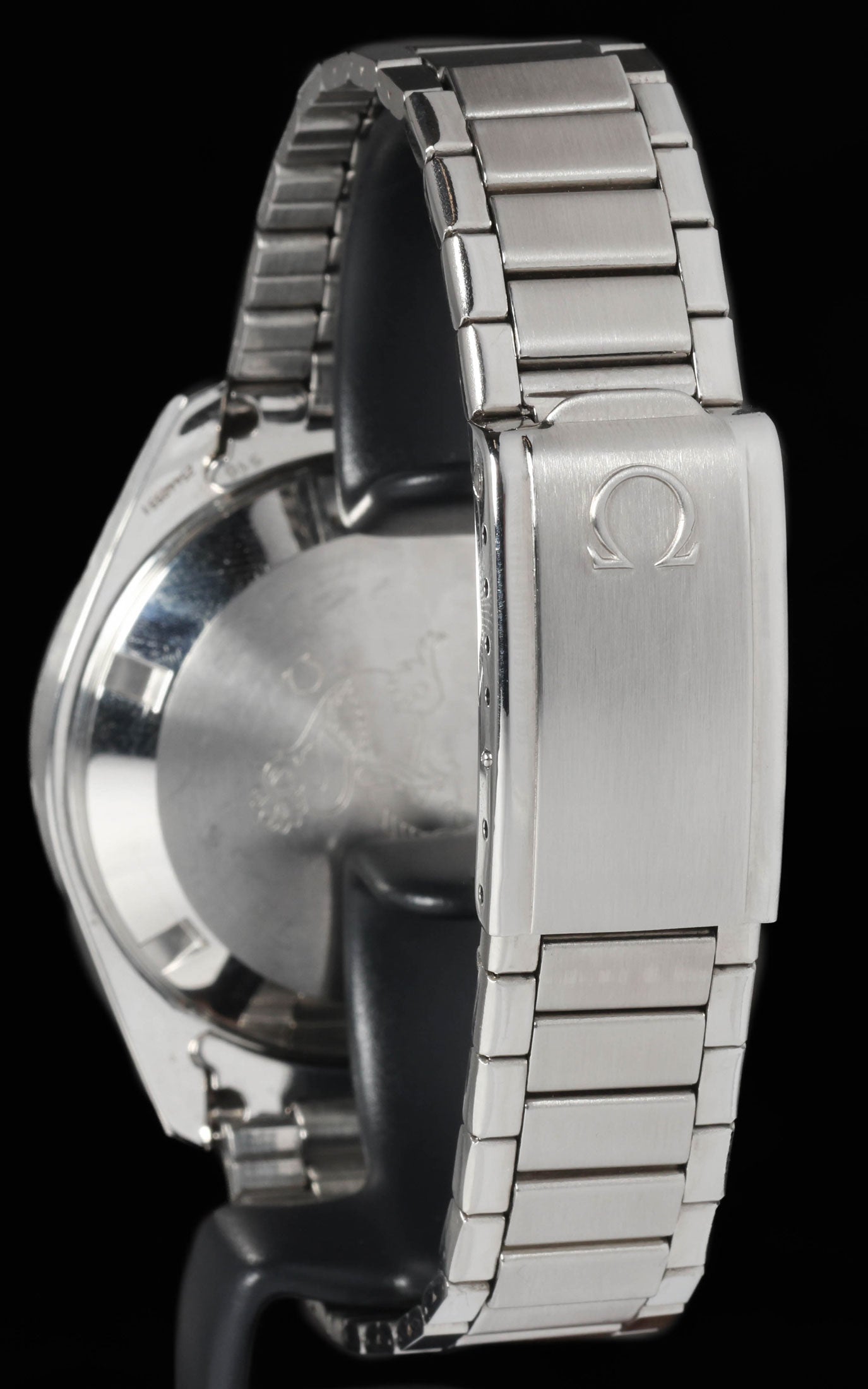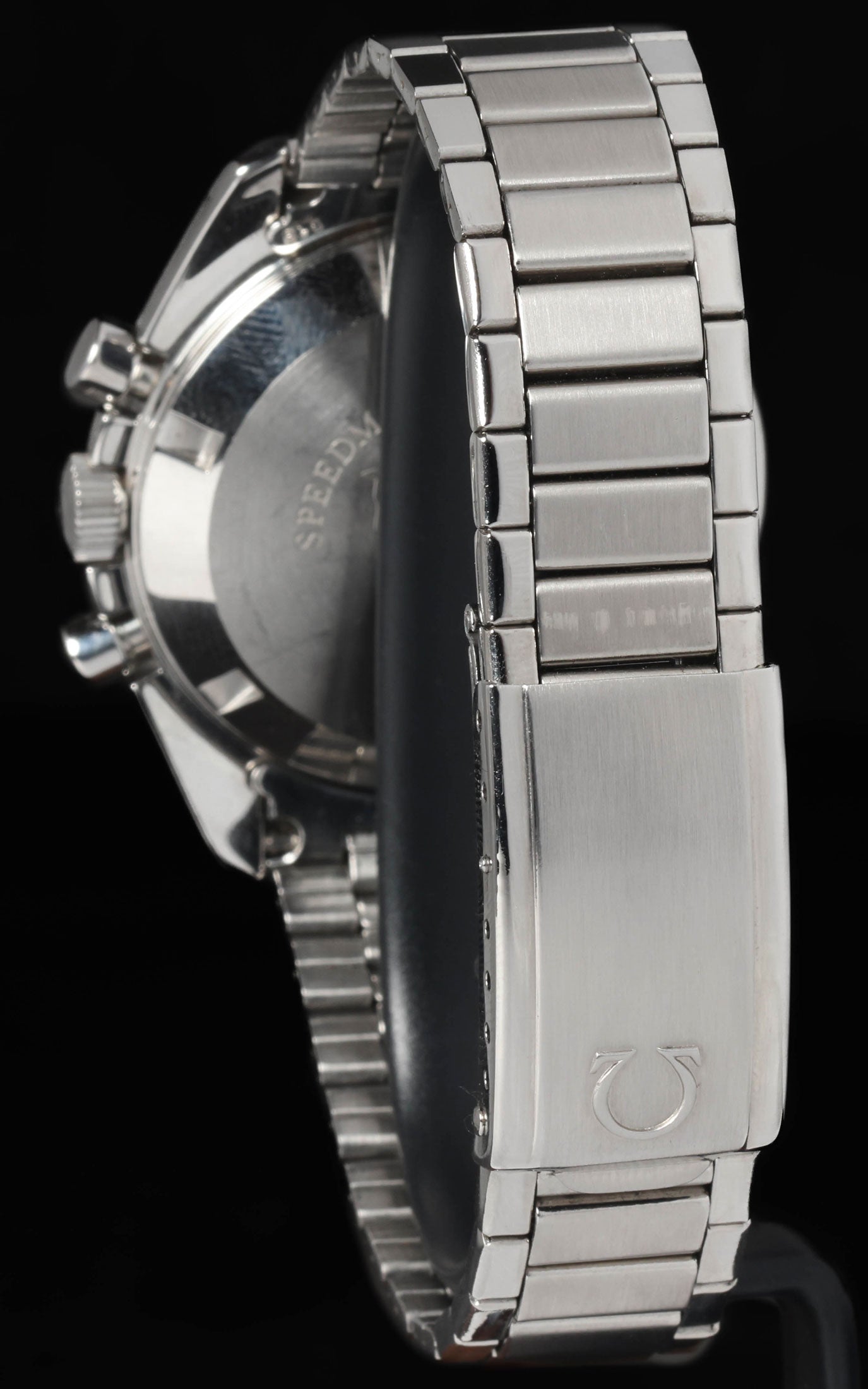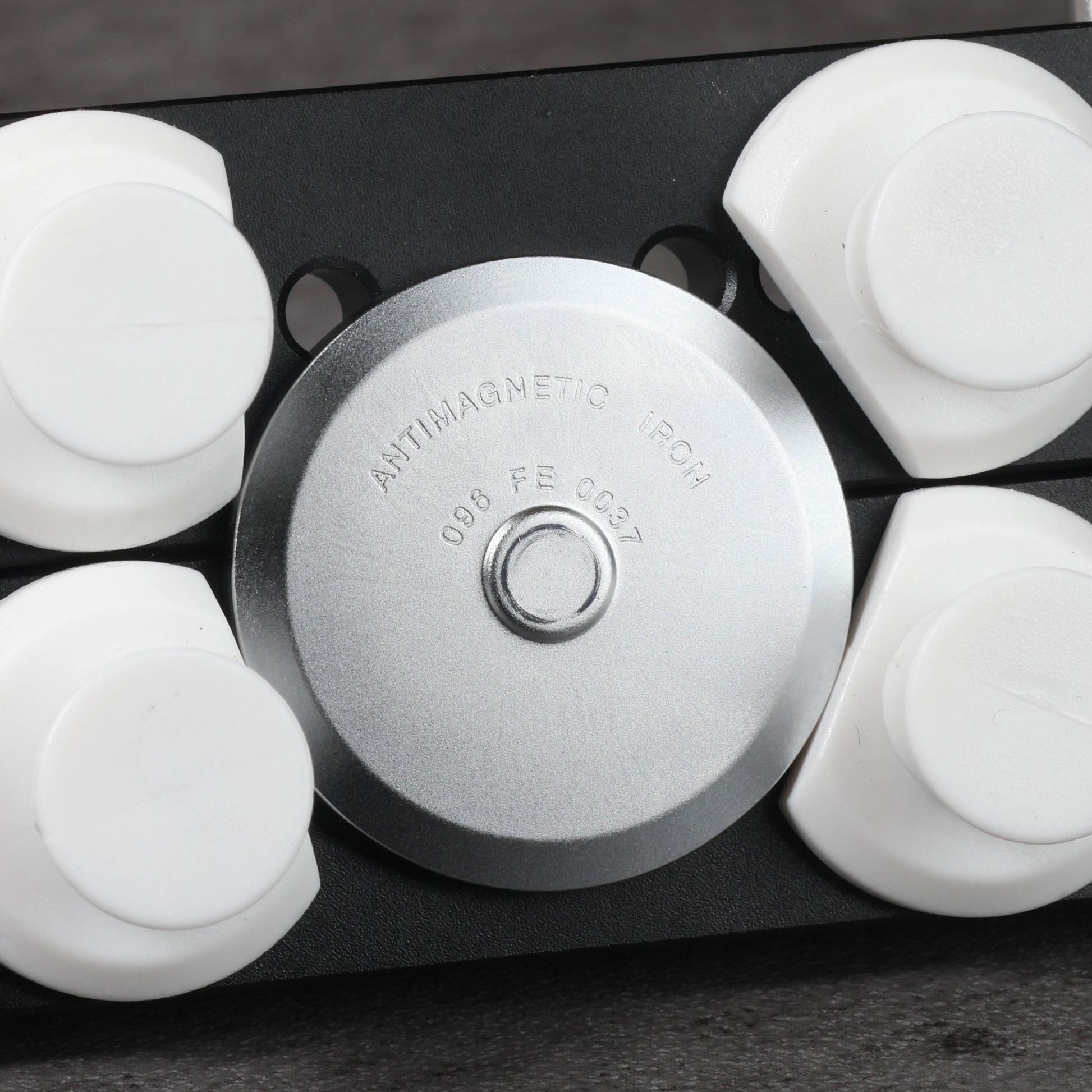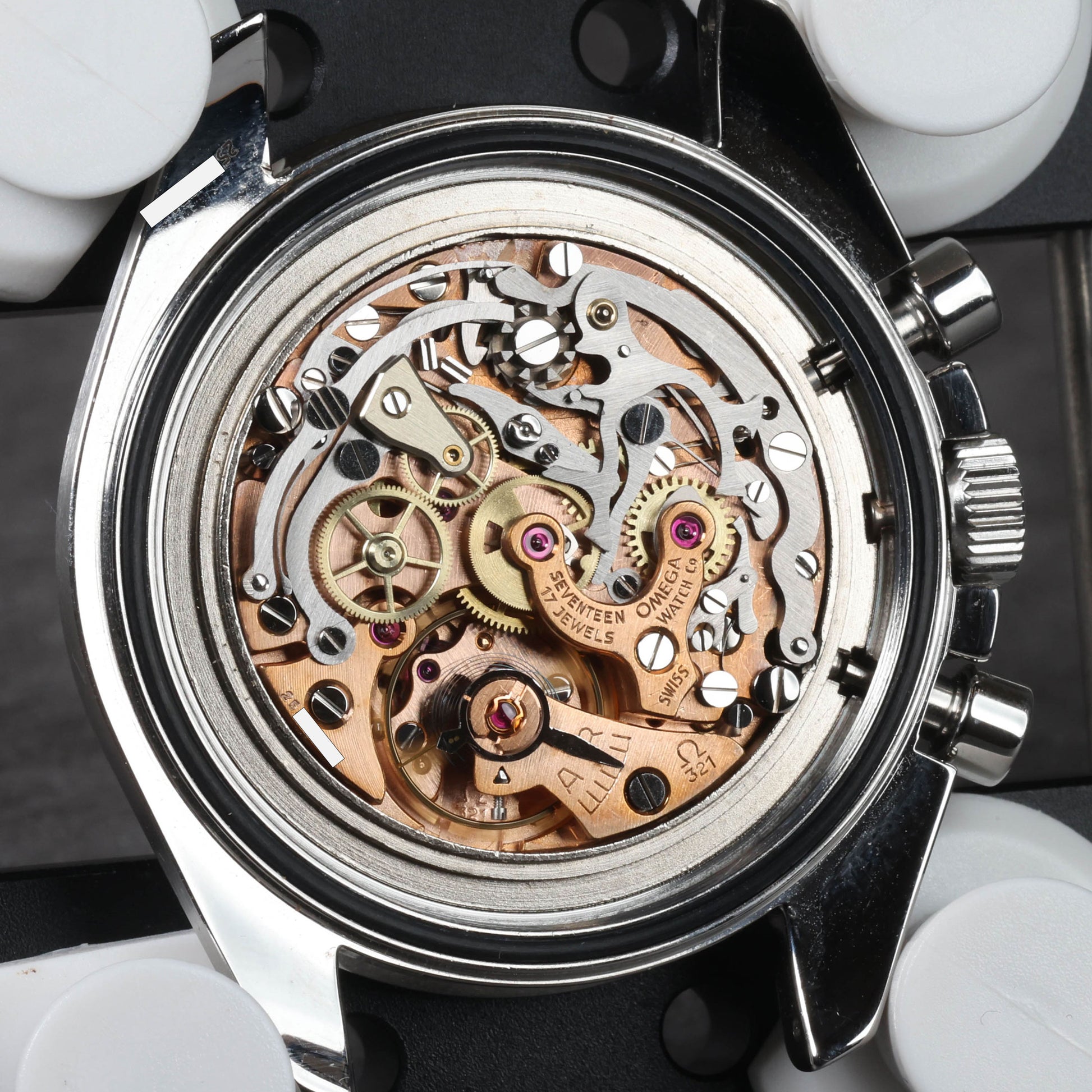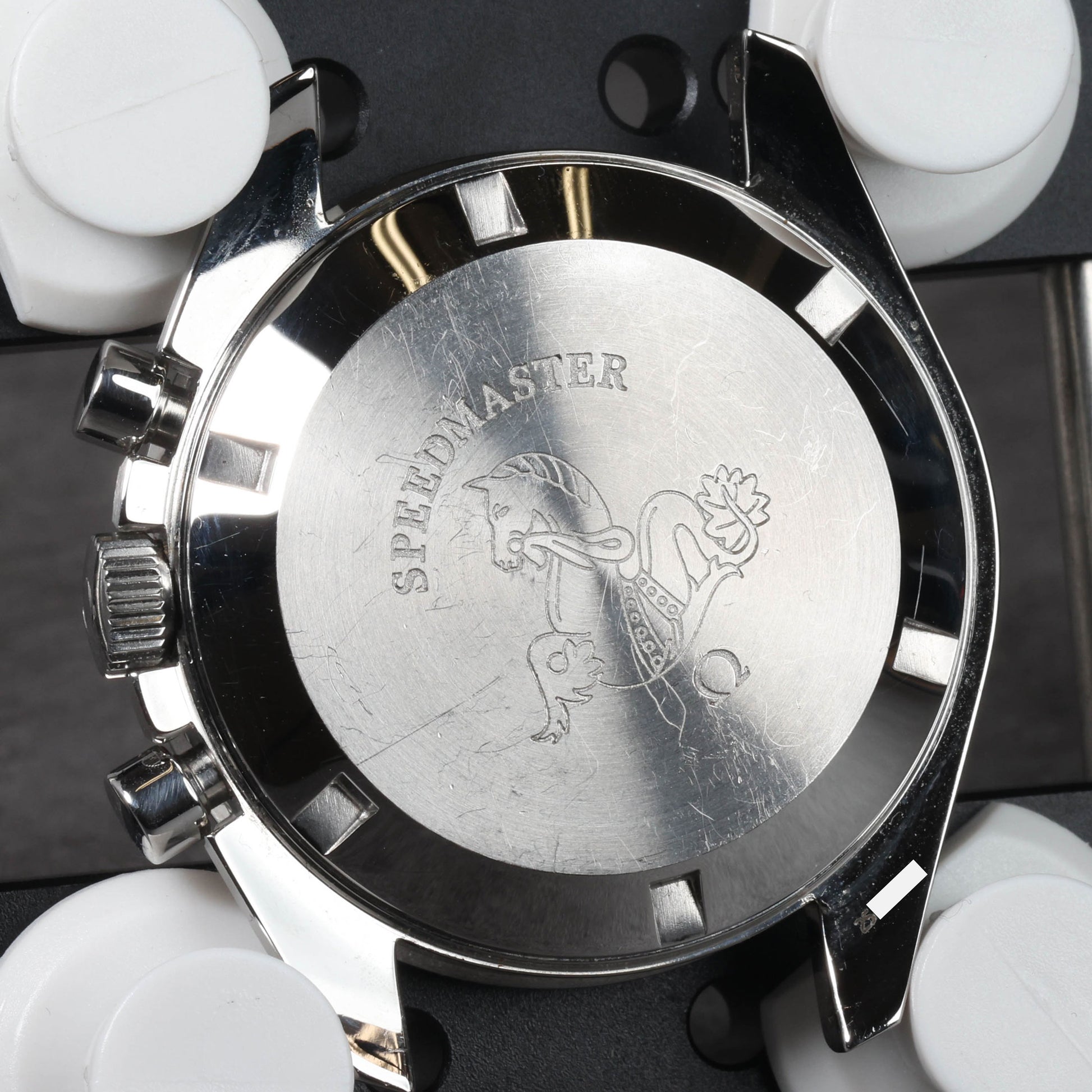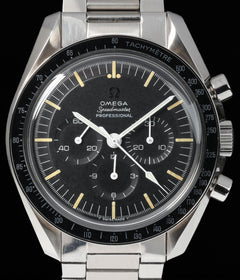Crown Vintage
Omega Speedmaster ST105.012 42mm 1967
Omega Speedmaster ST105.012 42mm 1967
Couldn't load pickup availability
Omega Speedmaster ST105.012
The case presents in excellent condition with little to no wear visible and appears unpolished, retaining its original lines and finish. Accompanying the watch is its original flat link bracelet, also in excellent condition, showing only minimal wear and very little stretch. The dial is an outstanding example of an original tritium step dial, with even ageing and excellent preservation. Hands are later service replacements, providing strong legibility while remaining period correct to Omega’s service standards. Overall, this is a superb and honest example, combining an unpolished case, original bracelet, and a beautifully preserved tritium dial.
Share
Why we love this watch
Why we love this watch
Omega Speedmaster ST105.012
Why this reference matters
The Omega Speedmaster ST105.012 is not just another vintage chronograph—it is the watch that became the first worn on the lunar surface. Introduced in the mid-1960s, the 105.012 brought two important “firsts” to the Speedmaster line: the introduction of the asymmetrical, crown-guard case design and the addition of the word “Professional” on the dial. These updates signalled a shift from motorsport tool to full-fledged professional instrument, ready for the most demanding environments imaginable. It was this very reference that accompanied Buzz Aldrin during Apollo 11, making it the first watch on the Moon. The 105.012’s reputation rests not only on that iconic moment but also on the rigorous path of testing and selection by NASA, which deemed it tough enough to trust with astronauts’ lives.
From racetrack to launchpad
When Omega launched the Speedmaster in 1957, its intended audience was engineers and racing drivers. It was the first chronograph with a tachymeter scale on the bezel rather than the dial, a practical move that improved legibility. The design quickly gained popularity beyond its intended niche, appealing to pilots and technical professionals who valued its durability. In 1962, astronaut Walter Schirra wore his own Speedmaster reference 2998 during Mercury-Atlas 8, proving in practice that the watch could survive the rigours of space. That unofficial test prompted NASA to consider whether an off-the-shelf chronograph might serve astronauts better than any specialised prototype.
By 1964, with the Apollo program moving forward, NASA began looking for a chronograph that could be formally certified for space missions. They issued a request to several watch manufacturers, setting the stage for one of the most grueling endurance tests any timepiece has ever faced.
NASA’s testing protocol
James Ragan, an engineer in charge of equipment qualification at NASA, oversaw the testing program. The evaluation was designed not merely to push watches to their limits, but to destroy them—so that whichever survived could be trusted implicitly. The process was more punishing than anything the watches were likely to face in actual spaceflight.
The tests included:
- High temperature: Watches were baked at 71°C for two days, then subjected to 93°C for 30 minutes.
- Low temperature: They were frozen at –18°C for four hours.
- Thermal cycling: Rapid shifts from hot to cold were repeated, simulating the transition from sunlight to shadow in orbit.
- Vacuum: Watches were exposed to near-vacuum conditions while under extreme heat, mimicking the vacuum of space.
- Humidity: They endured 95% humidity at 71°C for several days.
- Shock and acceleration: Watches were struck with shocks up to 40 g and subjected to rapid acceleration to test structural integrity.
- Vibration: They were vibrated across a wide frequency range for hours, replicating the stresses of launch.
- Pressure: Both high and low pressure conditions were simulated, covering scenarios from cabin decompression to deep-space void.
By the end of these trials, the field of contenders was dramatically reduced. Crystals cracked, movements seized, and cases warped.
Why Omega prevailed
Three brands submitted watches: Rolex with a chronograph version of the Daytona, Longines-Wittnauer with its 235T, and Omega with the Speedmaster. Rolex’s entry lost its crystal under high heat; Longines’ movement stopped entirely after humidity testing. Only the Omega Speedmaster survived the full gauntlet, maintaining accuracy and structural integrity throughout.
NASA declared the Speedmaster flight-qualified in March 1965. From that moment, it became mandatory equipment for astronauts during space missions. Its robust calibre 321 column-wheel chronograph movement, hesalite crystal (which would not shatter into dangerous shards), and clear dial layout made it not just the best choice, but the only choice.
The ST105.012 and its defining features
The ST105.012 arrived just as NASA’s selection process concluded. It introduced the asymmetrical 42 mm case, with integrated crown guards to shield the winding crown and pushers from damage. This was no mere aesthetic tweak—the change was born of functional necessity, ensuring that the chronograph could be operated in bulky gloves and withstand impacts.
The dial carried the new “Professional” designation, a subtle but important nod to its transition from racetrack tool to astronaut’s companion. Its luminous markers, stark white baton hands, and hesalite crystal ensured legibility in all conditions. The external tachymeter bezel, with its dot-over-90 detail, provided quick calculation of speed or rate, a feature engineers and pilots valued.
Inside was the calibre 321, a column-wheel, lateral-clutch chronograph known for its crisp actuation and rugged construction. The 18,000 vph beat rate gave the chronograph seconds hand a deliberate sweep that was easily legible.
Apollo 11: the Moon mission
When Apollo 11 launched in July 1969, each crew member carried a NASA-issued Speedmaster. Neil Armstrong left his in the Lunar Module after the onboard clock malfunctioned, using it as a backup timer. Buzz Aldrin wore his ST105.012 over the cuff of his bulky spacesuit as he followed Armstrong down the ladder of the Eagle. At that moment, the 105.012 became the first watch worn on the Moon.
Aldrin’s watch was later sent to the Smithsonian but was lost in transit, an unfortunate twist that only adds to the mystique. Michael Collins, orbiting above in the Command Module, wore a 145.012. But it was the 105.012 that became forever tied to humankind’s first steps on another world.
Everyday tool for extraordinary missions
Astronauts didn’t just wear the Speedmaster for ceremony—it was a working instrument. During spacewalks, it timed experiments and manoeuvres. In Apollo 13, Jack Swigert used his Speedmaster to time a 14-second engine burn that helped guide the stricken spacecraft back to Earth. The chronograph’s reliability was not symbolic; it was lifesaving.
The hesalite crystal proved crucial as well. In the event of impact, it would crack rather than shatter into sharp fragments, which could have been catastrophic in weightlessness. Its acrylic material could even be polished clear again if scuffed.
NASA’s ongoing reliance
From Gemini through Apollo, Skylab, and even the Space Shuttle era, the Speedmaster remained NASA’s standard issue. The agency’s decision to qualify it again in the 1970s for later programs showed their continued trust. Even today, Omega Speedmasters are used on space missions, albeit with modern movements and updated certification.
Why collectors care
The 105.012 holds unique significance because it connects the dots between NASA’s brutal testing, official certification, and the lunar landing. It is not just a chronograph with a famous name; it is the watch that earned its place in space by beating every rival under extreme conditions. For collectors, it represents the most authentic link to Apollo 11. Its asymmetric case, “Professional” dial, and calibre 321 movement make it both historically important and mechanically appealing.
Owning a 105.012 is owning the reference that redefined the Speedmaster, marking the transition from racing pits to launch pads. It embodies the moment when a commercial chronograph became a central piece of space exploration equipment.
Final thoughts
The Omega Speedmaster ST105.012 is a watch that tells the story of human ambition. It was designed for earthly pursuits, but through endurance and function it found its place on the Moon. NASA’s uncompromising tests destroyed almost every contender, but the Speedmaster endured. And when Aldrin stepped onto the lunar surface, the ST105.012 became more than a tool—it became an icon.
As a result, the 105.012 isn’t just a reference number in Omega’s archives. It is the first “Professional,” the first Moonwatch, and a reminder of the extraordinary partnership between human engineering and human exploration.
Case & Bracelet
Case & Bracelet
- Case & Bracelet in excellent condition, case has little to no wear visible. Original flat link bracelet in great condition, minimal wear & little stretch visible.
- The case looks to be unpolished.
Dial & Hands
Dial & Hands
- Hands service
- Dial excellent tritium step dial.
Warranty & Condition
Warranty & Condition
Crown Vintage Watches provides a minimum 3-month mechanical warranty on pre-owned watches, from the date of purchase.
The warranty covers mechanical defects only.
The warranty does not cover damages such as scratches, finish, crystals, glass, straps (leather, fabric or rubber damage due to wear and tear), damage resulting from wear under conditions exceeding the watch manufacturer’s water resistance limitations, and damage due to physical and or accidental abuse.
Please note, water resistance is neither tested nor guaranteed.
Shipping and insurance costs for warranty returns to us must be covered by the customer. Returns must be shipped via traceable courier. Return shipment must be pre-paid and fully insured. Collect shipping will be refused. In case of loss or damages, the customer is liable.
Our Pledge
At Crown Vintage Watches, we stand by the authenticity of every product we sell. For added peace of mind, customers are welcome to have items independently authenticated at their own expense.
Condition
Due to the nature of vintage timepieces, all watches are sold as is. We will accurately describe the current condition and working order of all watches we sell to the best of our ability.
Shipping & Refund
Shipping & Refund
